|
Jessica Rath
This is for all of you (us) who don’t like to spend a lot of time slicing and dicing. All ingredients go into ONE pot, so there isn’t much to clean up, either. Nonetheless, the taste is exceptional – good enough for a special occasion!
0 Comments
We’ve been travelling a lot this summer. After 2 years of Covid, putting off several trips and visits to friends and family, we decided it was time. I wrote about our trip through Arkansas where we stopped at the Crater of Diamonds State Park, and then went to the Jim Coleman Quartz Crystal Mine. This last trip was to Seattle via Wyoming. Not a direct route, you may have noticed. One of the states we regularly go through on the way to Seattle is Utah and when I Googled rock/fossil collecting in Utah, it came up with this place in Wyoming. To be fair, it’s just over the border, less than an hour from Park City, Utah. It turns out the ‘Fish Fossil Capital of the World’ is in Kemmerer, Wyoming. There is a park there devoted to it, and also, there are several privately owned quarries that allow the public to look for fish fossils. I spent the day, literally 8 hours, bent over, splitting open slabs of rocks that they provided. They also provided the tools. I went to American Fossil, check them out HERE. I found some great fish fossils, had a blast, was thoroughly exhausted at the end. They were very friendly and helpful, and I plan on going back again Zach Hively
Fool's Gold I have decided to become the human version of P.F. Flyers: I want to run faster, jump higher, or at least endure nominal physical exertion without hurting my back. I have also decided to embrace who I really am, which is a man deeply averse to exercise. I have tried it all: running never gave me that mythical high. Swimming never enhanced my hearing with swimmer’s ear. And tennis? Well, I quite like my elbows just the way they are. Yet for all the distaste and disdain I have for exercise, I LOVE being active. Who doesn’t love activities? This is a word we use to coerce children and child-like adults into keeping themselves occupied for at least five minutes a stretch. “Let’s do an activity!” could lead to ANYTHING. Building the Tower of Giza or the Pyramid of Pisa out of clothespins and pasta is an Activity. Digging for the Lost Ark is an Activity. Picking up the trash that blows in from the neighbor’s yard like money-seeking relatives in the night? Most definitely an Activity. In fact, the only thing better than an Activity is a NEW Activity. This is really quite Zen, if you don’t think about it too hard: it’s the doing that matters with Activities, much more than the finishing, and if a new Activity gives your caretaker ten more minutes of effing peace and quiet, you best believe there will always be a new Activity. Of course, I don’t get such inventive variety with my Activities these days, because I spend all my time walking the dog. Both my faithful readers will remember that I recently adopted Ryzhik, who requires approximately seventeen consecutive hours of exercise each day. This contrasts with my other dog, Hawkeye, who like me prefers Activities to exercise. We are really quite alike, Hawkeye and I, and the similarities go far beyond our matching rugged handsomeness. I like throwing balls, and Hawkeye likes fetching them. I also like throwing sticks, which Hawkeye also likes fetching. We both enjoy the pure being-ness of being outside, and we both will turn around and head home rather than talk to strangers out there in the world. We will also congratulate each other on a ten-minute-constitutional well done, then settle in on the couch to re-binge a season of Daredevil. So Ryzhik has forced a bit of adjustment in our lives. It now takes three, four days to binge a full season. And walking is now a regular form of exercise, especially if I don’t want someone pulling all the coats off all the hooks in all the rooms of the house, sometimes with the hooks still attached. Ryzhik is that freakish beast who revels in exercise but can’t stand Activities. For a block of time each day, we leave Hawkeye at home for some of that well-warranted effing peace and quiet, and we go out for a destruction-prevention walk. Rather, I walk—and Ryzhik leaps up cliffs, and digs up rabbit dens, and disappears to join the circus, and returns with exotic animal skulls in his maw. He truly is a P.F. Flyer, and the reason I want to become one too is the dread that someday I will have to carry all 75 pounds of him home. Fortunately, I have a brother-in-law. Let’s call him “Scott” because that is his name. Scott is the sort of man who was born capable of lifting refrigerators. For a long time now, he has been rucking—which is the fine art of powerwalking with the equivalent mass of a Ryzhik in a backpack. “Teach me,” I said, because even after whole decades of Activities I am more likely to empty a fridge than move it. So Scott got me started—and we started smart. I selected a moderately petite rock, and Scott had me wrap it in duct tape so it wouldn’t chew up my pack. I strapped the pack to my back and took the first steps of turning Ryzhik’s walks into an Activity—hey, let’s go carry rocks for an hour! It’ll be fun! And it was, both times. I could practically feel myself getting stronger and less resistant. It’s amazing the difference that five, six whole pounds made in my worldview. Until those pounds made me take up new Activities like “should I take two or three ibuprofen this morning,” “where’s the ice pack,” and “Epsom salt baths.” Much less P.F. Flyer, much more penny loafer. Which is okay, too, because from now on, I’ll make the dog carry the rocks—in preparation for the day he needs to carry me home. Note: Concerned about the plight of the Monarch Butterfly and their endangered status, I republished an article Sara wrote last year and asked her to write about what we might do to provide habitat for this jewel. Thank you Sara
: I am going to begin this essay with a personal story. Yesterday was a gorgeous blue and gold day and I was walking through my milkweed strewn field when suddenly I discovered a baby monarch caterpillar chewing up a leaf… I was just starting the research for this essay and so I was very excited. This year I had already planned to raise another monarch as I have done for most of my life – and here he was! I carefully removed the milkweed stalk, added others and brought them home to place in a bucket. I planned to raise this one outdoors. Then I came in to work on my research… needless to say I was simply horrified to learn that scientists are now saying that it may put the monarch at risk to hand raise them. I checked other sources with the same result. I went out to see my little friend thinking I had best return him to the field as fast as I could and he was GONE. Oh no, I was distraught. I came back in with a heavy heart that I couldn’t shake all day. Why do I have to keep learning again and again that nature takes care of her own WITHOUT MY HELP, even when I interfere so rarely? Last night returning from a walk with my dogs I casually checked a nearby milkweed patch – and lo – there he was munching on a leaf warming in the sun! I quickly took a picture and then moved closer to inspect my little friend and he simply dropped off the leaf and disappeared out of sight! Enough of this predator; the message couldn’t have been more clear. As I came down the driveway I realized the little fellow had made a long arduous journey up the hill to rooted milkweed, no doubt by scent. He must have been exhausted. But what choice did he have? His field was a quarter of a mile away. I was so relieved but still worried. Monarch caterpillars like full sun and this batch didn’t have it. This morning I couldn’t find him – the sun doesn’t hit the milkweed patch until after 10 AM. When the sun rose over the trees I went back to check and he had moved to another plant that was getting full sun. I apologized profusely telling him that I was so sorry to have behaved so stupidly but that I didn’t know… then I left him unable to decide whether moving him back to the field was what I should do, or perhaps it would be better to let him be? The end of this story remains unfinished…But you can be sure I will NEVER move a monarch caterpillar again. He taught me a powerful, painful lesson that I needed to learn… From NPR
The monarch butterfly fluttered a step closer to extinction Thursday, as scientists put the iconic orange-and-black insect on the endangered list because of its fast dwindling numbers. "It's just a devastating decline," said Stuart Pimm, an ecologist at Duke University who was not involved in the new listing. "This is one of the most recognizable butterflies in the world." The International Union for the Conservation of Nature added the migrating monarch butterfly for the first time to its "red list" of threatened species and categorized it as "endangered" — two steps from extinct. The group estimates that the population of monarch butterflies in North America has declined between 22% and 72% over 10 years, depending on the measurement method. Extinction is Forever Reprinted From Observations 8/6/21 Sara Wright Almost every day I spend a little time down in my field waist high in the milkweed searching for caterpillars and hoping for the sight of a Monarch. This summer I have seen five Monarchs in all and none have been spotted in my field. Of course Monarchs don’t need to feed on milkweed nectar; they have many other choices. And this year the milkweed flowers bloomed so early that most Monarchs weren’t even around to feast on the fragrant flowers. I usually don’t start seeing these beautiful butterflies until early July and sightings used to peak around the end of the summer here in Maine. The startling flaming orange Mexican sunflowers and Liatris are favored monarch nectar blossoms neither of which I grow here because I don’t have full sun, but I do have Butterfly weed, lots of it, and twice a Monarch has visited along with clouds of Frittilaries. Even if flowers are barely open, or have passed quickly in the heat, Monarchs have an amazing variety of sensors, including antennae and chemoreceptors on their legs that allow them to detect the plants they are encountering for edibility. While Monarchs are able to fly long distances to find milkweed host plants and nectar sources, widely spaced milkweed patches mean that females need to search longer to find places to lay eggs, and thus they lay fewer eggs over the course of their lives. Wading through fields in search of Monarch caterpillars is something I have been doing most of my life. In the spring I plant acorns, raise frogs and toads; in the fall I watch Monarch caterpillars transform into butterflies…or I did. I still plant acorns, raise frogs and toads but now, even if I find a caterpillar I leave it where it is. So far this year I haven’t seen one, but I keep looking… In Abiquiu I dug up one milkweed plant from a low area and dug it in under a drainpipe. The milkweed seeded itself and the last time I was there three plants were thriving, just in case a Monarch passed through… Global statistics on the decline of all insects, which include the Monarch, vary from 75 - 40 percent depending upon the sources consulted and regions studied. Some places have not been researched so the picture is not complete. Scientists are deeply concerned about what might be the worst threat of all –Climate Change – but even without the latter the general trend is alarming because these butterflies like all invertebrates are at the bottom of a food chain that affects us all, human and non humans alike. According to the National Academy of Sciences (PNAS), not all insects are declining. Some moth species are increasing. Numerous temperate insects, presumably limited by winter temperatures, have also increased in abundance and range, in response to warmer global temperatures. Around here the prevalence of ticks especially deer ticks are excellent examples. Mayfly swarms are also on the increase. In some places, native herbivores have flourished by utilizing nonnative plants as adult nectar sources or as larval food plants, and there are even instances where introduced plants have rescued imperiled species. However,“Monarchs are the face of the wildlife extinction crisis,” states a senior scientist at the Center for Biological Diversity. The eastern Monarch population is made up of the butterflies east of the Rocky Mountains and accounts for roughly 99% of all North American monarchs. The butterflies migrate each winter to Oyamel fir forests on high-elevation mountaintops in central Mexico to spend the winter. Scientists estimate the population size by measuring the area of trees turned orange by the clustering butterflies. That population has been dangerously low since 2008. In December of 2020 the U.S. Fish and Wildlife Service put monarchs on the waiting list for Endangered Species Act listing, which confers no actual protection for them or their habitat. Yet the U.S. Wildlife organization has estimated up to an 80% probability of population collapse for eastern Monarchs within 50 years and a 96-100% probability for the western population (This organization cannot be trusted – double speak is normalized). “Now the 2021 count shows monarch numbers declining even further,” states the Center for Biological Diversity because of Monsanto’s toxic Roundup. Monarchs are threatened by pesticides, herbicides, global climate change, loss of habitat, and illegal logging of the forests where they migrate for the winter. They are also threatened by mortality during their migrations from roadkill. Monarchs have lost an estimated 165 million acres of breeding habitat in the United States to herbicide spraying and development in recent decades. The caterpillars only eat milkweed, but the plant has been devastated by increased herbicide spraying in conjunction with corn and soybean crops that have been genetically engineered to tolerate direct spraying. The butterflies are also threatened by neonicotinoid insecticides (Round Up), fungicides and other chemicals that are toxic to young caterpillars. Monarch butterflies west of the Rocky Mountains overwinter on the central coast of California. Their numbers have plummeted by 99%, and fewer than 2,000 total butterflies were counted this winter (2020 -21). The western migration has collapsed in part due to warmer winters, pesticides, loss of habitat etc. and to people planting invasive tropical milkweed. An eastern Monarch’s relationship with the climate is complicated. This insect is not a typical migrant that spends the winter in the south, comes north to breed, then returns south in the fall. Monarchs take a number of generations each year to reach their northern breeding areas and if even one of these areas is compromised it can affect the whole cycle. The forth generation born during the summer is the one that makes the long Journey south to Mexico from Maine each fall. The yearly count of Monarch butterflies overwintering in Mexico (2021) continues to show a dramatic decline in this imperiled species. Today’s count of 2.10 hectares (5.2 acres) of occupied winter habitat is down 26% from last year’s count. The minimum population threshold needed to be out of the danger zone of extinction is six hectares. In the wintering sites in Mexico, as forests become more heavily degraded by logging and drought they are less able to buffer the Monarchs from temperature extremes, including both warm daytime temperatures and cold nighttime temperatures. What can we do to help the Monarch butterfly stay with us as long as it can? Some solutions are simple. Plant milkweed, or simply let it go wild instead of mowing down entire fields where it grows naturally. I mow my small field in the fall once after all the birds have fledged and most of the autumn flowers are spent (wild asters and goldenrod continue to bloom around the edges of my field attracting late Monarch arrivals). This approach allows me to keep a protected open space during three seasons and still allows for summer’s wild abundance. If you don’t want a flower garden create a wildflower meadow like my neighbor has. Peter’s Meadow is replete with red and white clover, daisies, vetch, black eyed susans, blue grass, yarrow, milkweed, and more. I have seen two Monarchs feeding in this lovely space. If you garden, plant flowers the Monarchs are attracted to like Mexican Sunflower Liatris, Salvia, Butterfly weed, Bee balm, Vervain, Verbena, Zinnias – there are so many excellent choices – visit your local pollinator garden to see what they have planted to attract the Monarch butterflies. The Wildlife Center in Espanola is an excellent resource. Stop using pesticides/herbicides ANYWHERE. Stop growing genetically engineered seeds. Boycott Monsanto. Join any organization that is dedicated to working with the overwhelming problems associated with Climate Change and our crisis of biodiversity. Fall in love with every Monarch you see. Afterward: In an effort to trace the migration of Monarch butterflies, citizen scientists (including children) are encouraged to collect, tag, release and report on monarchs in their respective areas. Although well intentioned, I am disturbed by this practice because there are studies that indicate that when Monarchs are captured and held by humans their hearts race and they exhibit a high stress level. Creating more stress for an insect who has to make an arduous fall journey to the mountains of Mexico is not something I would feel comfortable doing. This practice may be useful for people who need statistics to tell them how fast these beautiful butterflies are disappearing, or whether one butterfly made a successful journey but who is asking the Monarch how it feels? Rim Vista Trail
Length 5.8 mi Elevation gain 1,292 ft Route type Out & back The road to this trailhead can be rough- Users suggest having a high clearance vehicle. Moderately Challenging First you need to find FR 151. This is the road to the Monastery which is about 2.5 miles past Ghost Ranch. There will be a sign on your right for the Monastery and when you reach 151 turn left to head towards the Monastery. Approximately 1/2 mile down this dirt road is a sign on your right saying Trail. If you’ve gone a mile you missed it. Turn right onto a dirt road that leads to the trail head. The trail head is well marked and the trail is easy to spot. As you hike up you will gain 1300ft. of elevation. The hike is moderately strenuous and there are plenty of rocks to choose from. You will go approximately 2.3 miles to reach the top. Along the way you will see fantastic vistas of red rock, Abiquiu Lake and Pedernal. My favorite was the lake and the spectacular red rock. The vistas increase as you reach the top. Once there you can choose left or right paths. We chose the northern trail where I found the views spectacular and I was able to set my tripod on flat ground. Kevin and I enjoyed a leisurely hike stopping for photos and just to enjoy the scenery. And many thanks to Kevin Spitzer for showing me the trail head. We are planning more as the season progresses. For more info on the hike check out Abiquiu Inn for the book ’50 hikes in northern NM’. The Rim Vista train is number 21 on page 116. Happy Trails Greg Note: Always bring water and let someone know where you are going and expected return if hiking along. Once you get to the rim you might lose the trail back down so be careful to make note of the trail to return. Call it by any name—Chicken Soup, Jewish Penicillin, Sopa de Lima, Pho, etc.—but just call it Delicious and Healthy. I was lucky to grow up eating Chicken Soup on a regular basis. In fact, in our household, every dinner, whether in cold or hot weather, started with hot soup served in large, deep, rimmed bowls. Dad explained that the hot soup warmed the bowl for the entrée that followed and that was eaten from the same dish. Mom espoused her theory that imbibing hot liquids on a hot day helped match body temperature with the ambient temperature and thus was cooling. We drank lots of hot coffee, both at breakfast and after dinner. I remember Mom packing up freshly fried chicken and hot potato salad and two thermos bottles filled with hot, not iced, coffee for a picnic my brother and I attended with a large group at the Indiana Sand Dunes along Lake Michigan just South of Chicago. It was a very hot day, and we were the only ones who brought hot food. Everyone else munched on cold sandwiches and drank many cold drinks but complained of being hot. My brother and I were perfectly comfortable. Maybe Mom was on to something, far-fetched as it seemed to me at the time.
Back to Chicken Soup. . .there are countless recipes depending on the regions of origin. The Old World gave us Chicken Soup as made there and in this country by Jewish people. When I was first married, we rented an apartment in a predominately Jewish community North of Chicago. One day as I briskly walked to the local supermarket, I overtook three Jewish Bubbes heading there also. I walked around and in front of them but slowed my pace when I overheard them talking about their plans for Shabat dinner. Since childhood, I loved eavesdropping; this time I justified doing so by thinking I might learn something. That something was reverence for food made with care and with love for the people who were going to eat it. With a smile on my face and gratitude in my heart, I held open the store’s door for these three loving women. In this hemisphere, Mesoamericans cooked Chicken Soup for centuries. The current version is Sopa de Lima, thanks to the recipe’s lime juice. The Far East gives us many Chicken Soup recipes, from ancient China to the delicious Vietnamese specialty, Pho. Thank goodness for Vietnamese restaurants in Santa Fe. If I begin to wilt after a day’s shopping and errand-running, I often revitalize with a bowl of Pho, which can also be made with meat other than chicken. One of these days, I shall simply make it at home. My most-requested Chicken Soup recipe is for Chicken Broth by the Rule of Three, but today’s Chicken Soup recipe is The Whole Enchilada Chicken Soup, a fairly recent addition to my recipe file, and it is much easier and quicker to make than Bone Broth. For a complete meal, serve this soup with corn muffins or corn bread. Recommended: James Beard’s recipe for Helen Evans Brown’s Corn Chile Bread with green chile. EnJOY This recipe for thick, satisfying chicken soup—from superb California cook Mary Porter—takes very little time to make but is very big on flavor. Served with corn bread or corn muffins, it is a filling meal. Recipe can easily be doubled or tripled to feed a crowd. ~Hilda Joy Ingredients 3 cups chicken broth home-made, boxed, or canned 2 chicken thighs plus 2 chicken breast halves, skin on and bone in 1 cup yellow onion, diced 1-1/4 cups celery, diced 1 can, 28-ounce, green- chile enchilada sauce (or 2 cans, 15-ounce) 1 can, 15-ounce, 100% pure pumpkin 1 cup frozen corn, white or yellow shredded cheese crushed corn chips diced avocado Option: Hot Sauce Directions
Recipe is from ‘Beard on Bread’ by James Beard, who attributed recipe to Helen Evans Brown. When fresh corn is not available, a comparable quantity of frozen corn can be substituted. This best-ever cornbread should be served hot out of the oven. Recipe can easily be doubled. Ingredients 3 large ears of fresh, uncooked sweet corn 1 cup sour cream 3/4 cup butter, melted 2 eggs, well beaten 1/4 pound Monterey Jack cheese, very finely diced 1 can (4-ounce) peeled green chiles, drained and finely diced 1 cup yellow corn meal 2 teaspoons salt 3 teaspoons double-acting baking powder Directions
Images courtesy of Greg Lewandowski Poshuouinge
distance .5 mile, well marked Santa Fe National Forest Poshuouinge (pronounced "poe-shoo-wingay") is a large ancestral pueblo located on U.S. Route 84, about 2.6 miles south of Abiquiu. Its builders were the ancestors of the Tewa Pueblos who now reside in Santa Clara Pueblos and San Juan Pueblo. Poshuouinge was built on a high mesa, some 150 feet above the Chama River, around 1400. There are two springs located about 500 feet to the south of the ruins which are believed to have been the main water sources for the habitation. It is accessible by a United State Department of Agriculture Forest Service trail. Abiquiu and surrounding areas provide almost limitless year round hiking opportunities from beginner hikes to difficult one. One such hike is to the overlooks above Poshuouinge Ruins. This moderately steep, scenic half-mile ruin trail, has two vista areas and interpretive signs that overlook the Chama River Valley. There is no water. The trail rises approximately 220 feet from the parking lot to the hilltop overlook. The principal ruins included a large pueblo with over 700 ground-floor rooms surrounding two large plazas and a large kiva. Tree ring dates and the knowledge of local pottery designs indicate people lived at the site around AD1420 and abandoned it by the late 1400s. One tree ring date of 1391 suggest part of the village may have been built a generation or so earlier. If you want to explore a little further you can walk back on the mesa. 2.6 miles from the Abiquiú Post Office, south on Hwy 84. Approximately 18 miles south of Ghost Ranch. The trail is short but steep. Take only pictures and please stay on the trail. Hilda Joy Originally Published 6/28/19 Many years ago, I read a magazine article entitled In Defense of Stinginess, clipped it, and pasted it into an album I had started of words I wanted to reread. The premise of the article is that we benefit from making things ourselves and primarily we benefit by foraging for food. When we moved from an apartment to two acres Northwest of Chicago, I finally had the opportunity to start foraging. Our property abutted an abandoned railroad right of way that had been built to assist dairy farmers in two counties to move milk to market. Though rails and ties had been removed, occasionally a spike would appear. This narrow-wooded area was home to a host of wild foods. This was about the time that Euell Gibbons published Stalking the Wild Asparagus and other books about looking for wild foods. Spying a few stalks of wild asparagus growing under a river birch in our front yard, I immediately bought this book, which became a food bible of sorts. Other teachers were neighbors, friends who grew up in rural environments, and the landscape architect who was charged with laying out the path of a paved bike path through the right of way. Soon, I was finding and utilizing chokecherry, elderberry, red sumac, raspberries, both red and black, chicory, dandelion, day lilies, ground cherries, wild onion, wild grapes, and, most flavorful of all, wild strawberries. In retrospect, I realize I bypassed plants. One of my daughters once said, “If I have children, I shall send them to you so they can eat things like day lily buds, which you say taste much like green beans when steamed, buttered, and salt-and-peppered.” The local forest preserve provided us with black walnuts and hickory nuts and, when springs freshened, watercress for a short time. Our property was planted with many fruit trees: apple, apricot, peach, pear, plum, crabapple; there were also five long rows of Concord grapes. We were blessed. In New Mexico, I am finally learning to forage for wild foods, having in Spring been taken on a hunt for chimija and just recently being given a large haul of wild spinach—aka, lamb’s quarters and pigweed—so I could cook delicious quelites. A friend promises me he will soon help me find sorrel along the Abiquiu roadsides. This summer, I shall dig up chicory root and roast it to add to coffee. Right now, I am expecting a windfall of verdolaga, most of which shall be cooked in the local style with bacon and onions. Some of it will definitely go into the Bode family recipe for verdolaga salad. I hope our readers will try this salad. If so, please let me know.
As I said in last week’s article, I received my 2 boxes of ‘Dirty Quartz’ from the Jim Coleman mine. I emailed with Terri Coleman, and she could not be more helpful. I was very excited to open the box and find some crystals on the top. The dirt settled a bit so I grabbed some of the quartz on top that looked nice and put it aside. I carefully poured the rest of the contents into a bucket so I could do a cursory cleaning of the batch. I rinsed some of the dirt out of the bucket ‘o quartz and then took out some handfuls of crystals/mud and put that into a large colander/strainer. I began rinsing and stirring and picking out the crystals, separating the nicest ones into a box, and the broken ones into another strainer. I was thrilled at the variety of crystals, and the clarity of some were just amazing. It took at least 45 minutes to clean up that box, done in two batches. Ultimately, I had a box of ‘keepers’ to sort through, and the rest which I wasn’t sure what to do with. I brought the box inside and sorted the crystals onto a tray, by size, shape, clarity. Ultimately, I found some favorites which I put aside.
All in all, I had a great time ‘finding’ these crystals. It’s quite a bit easier to find them in these bushels that they sell than at the mine itself. I loved both experiences, but Arkansas is quite a ways away from Abiquiu and sometimes you have to bring the fun to your home. I am already planning a trip to the Jim Colemen Mine to do a dig at their site. That will be next summer. I’ll save the second box I have for now, we have some grandkids coming later this summer. |
Submit your ideas for local feature articles
Profiles Gardening Recipes Observations Birding Essays Hiking AuthorsYou! Archives
June 2025
Categories
All
|



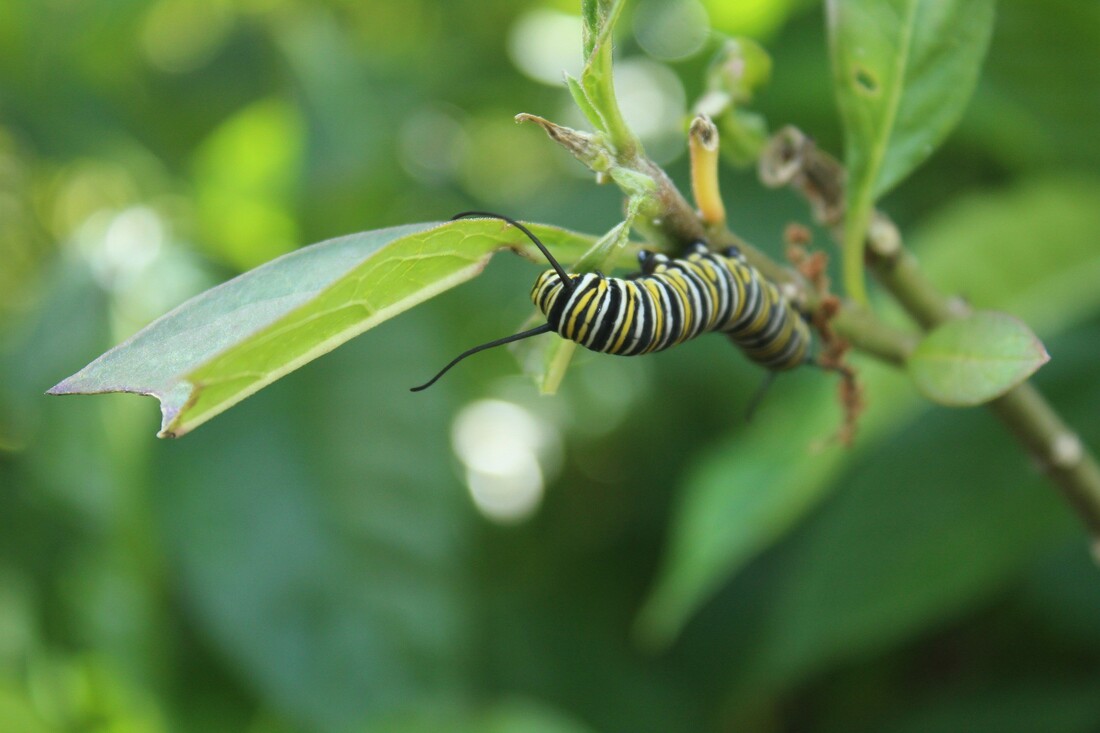
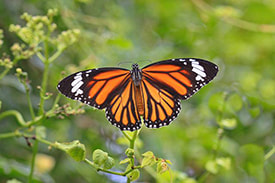
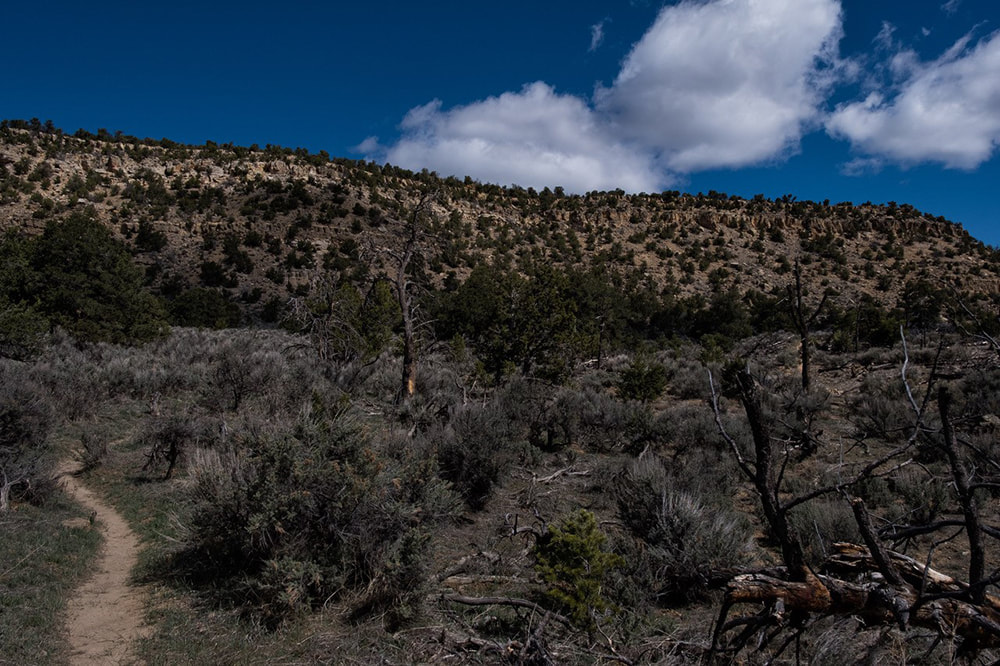
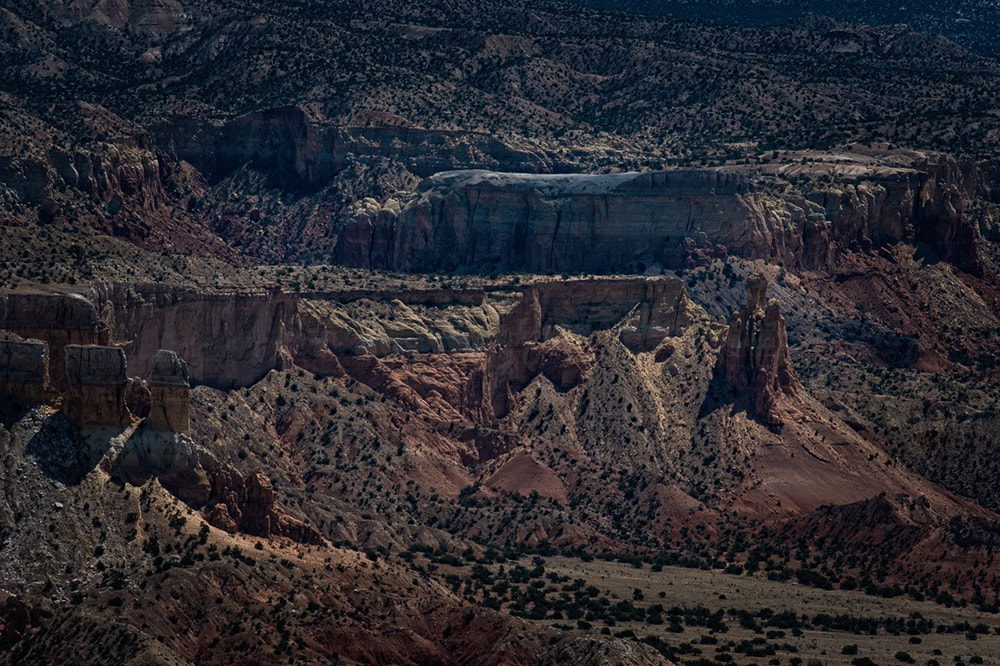

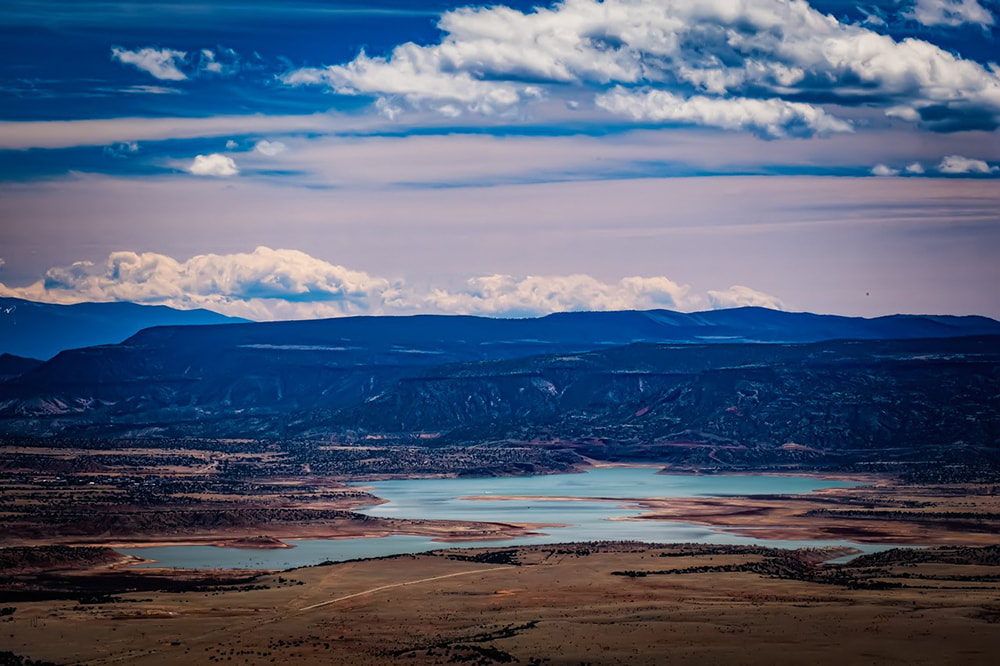


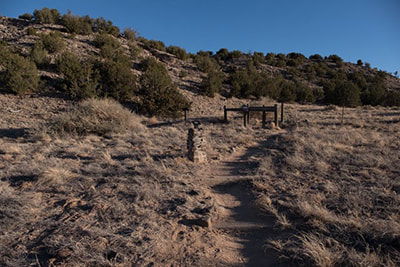
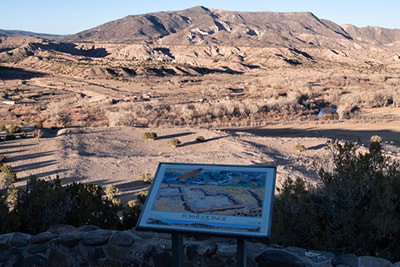


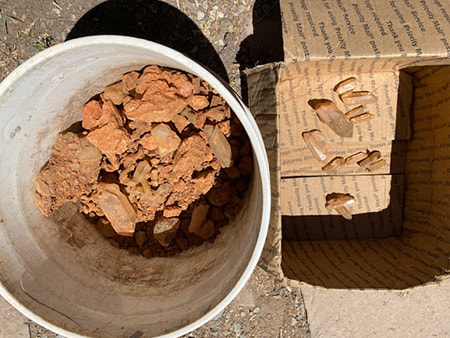

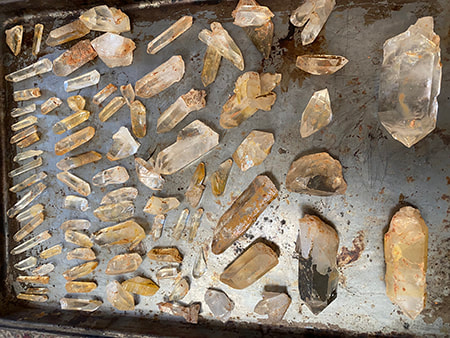
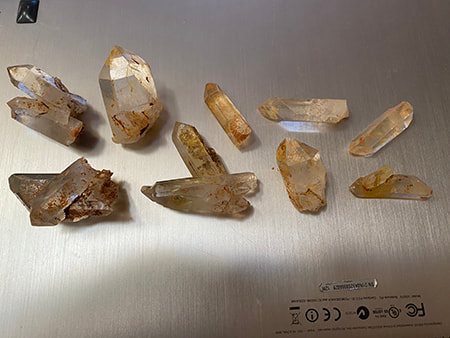
 RSS Feed
RSS Feed